Related Research Articles
Bartholomew de Badlesmere, 1st Baron Badlesmere was an English soldier, diplomat, member of parliament, landowner and nobleman. He was the son and heir of Sir Gunselm de Badlesmere and Joan FitzBernard. He fought in the English army both in France and Scotland during the later years of the reign of Edward I of England and the earlier part of the reign of Edward II of England. He was executed after participating in an unsuccessful rebellion led by Thomas, 2nd Earl of Lancaster.
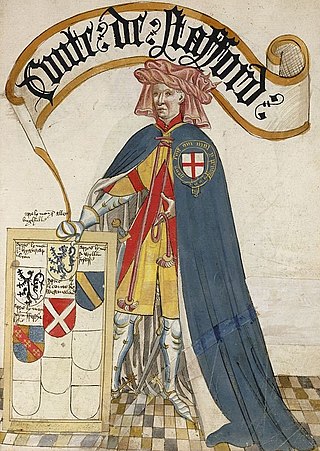
Ralph de Stafford, 1st Earl of Stafford, 2nd Baron Stafford, KG, of Stafford Castle and Madeley Castle in Staffordshire, was an English nobleman and a notable soldier during the Hundred Years' War against France.

Henry de Cobham, 1st Baron Cobham lord of the manor of Cobham, Kent and of Cooling, also in Kent, was an English peer.
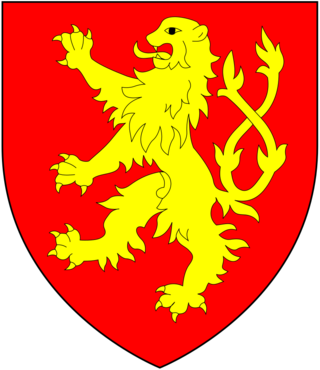
Henry Burghersh, was Bishop of Lincoln (1320-1340) and served as Lord Chancellor of England (1328–1330). He was a younger son of Robert de Burghersh, 1st Baron Burghersh, and a nephew of Bartholomew de Badlesmere, 1st Baron Badlesmere. He was educated in France.

Bartholomew Burghersh, 1st Baron Burghersh, called "the elder", was an English nobleman and soldier, a younger son of Robert Burghersh, 1st Baron Burghersh and Maud Badlesmere, sister of Bartholomew Badlesmere, 1st Baron Badlesmere. He was the father of Bartholomew Burghersh the younger.

Robert de Burghersh, 1st Baron Burghersh, was born between 1252 and 1256, at Burghersh, in Sussex, England, and died in 1306.

Lady Elizabeth de Montfort, Baroness Montagu was an English noblewoman.
Badlesmere may refer to:

Baron Wake of Liddell is an abeyant title in the Peerage of England. It was created in 1295 for John Wake. It has been in abeyance since 1408.
Baron Badlesmere was a title in the Peerage of England.
John (II) de Mowbray, 3rd Baron Mowbray was the only son of John de Mowbray, 2nd Baron Mowbray, by his first wife, Aline de Brewes, daughter of William de Braose, 2nd Baron Braose. He was born in Hovingham, Yorkshire.

Robert FitzWalter, 1st Baron FitzWalter was an English landowner, soldier, administrator and politician.
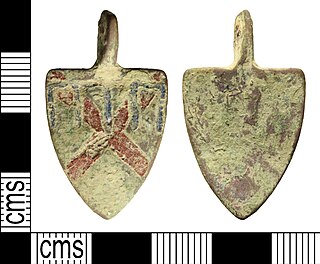
Margaret de Badlesmere, Baroness Badlesmere was an Anglo-Norman noblewoman, suo jure heiress, and the wife of Bartholomew de Badlesmere, 1st Baron Badlesmere.
Elizabeth de Bohun, Countess of Northampton was the wife of two English noblemen, Sir Edmund Mortimer and William de Bohun, 1st Earl of Northampton. She was a co-heiress of her brother Giles de Badlesmere, 2nd Baron Badlesmere.
Giles de Badlesmere, 2nd Baron Badlesmere was an English nobleman.

William Montagu, 2nd Baron Montagu, was an English peer, and an eminent soldier and courtier during the reigns of Edward I and Edward II. He played a significant role in the wars in Scotland and Wales, and was appointed steward of the household to Edward II. Perhaps as a result of the influence of his enemy, Thomas, 2nd Earl of Lancaster, Edward II sent him to Gascony as Seneschal in 1318. He died there in October of the following year.
Maud de Badlesmere, Countess of Oxford was an English noblewoman, and the wife of John de Vere, 7th Earl of Oxford. She, along with her three sisters, was a co-heiress of her only brother Giles de Badlesmere, 2nd Baron Badlesmere, who had no male issue.
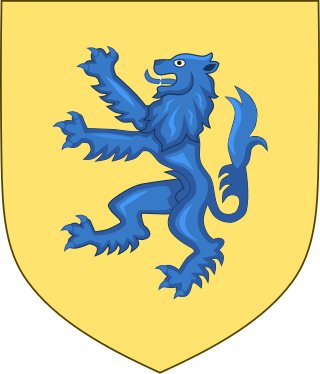
Henry Percy, 9th Baron Percy of Topcliffe, 2nd Baron Percy of Alnwick was the son of Henry de Percy, 1st Baron Percy of Alnwick, and Eleanor Fitzalan, daughter of Sir Richard FitzAlan, 8th Earl of Arundel, and sister of Edmund FitzAlan, 9th Earl of Arundel.
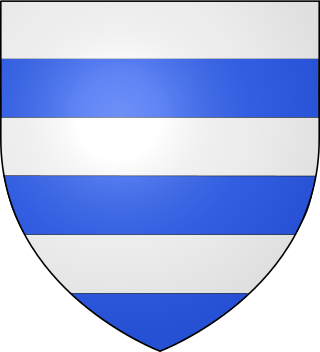
Richard Grey, 2nd Baron Grey of Codnor, of Codnor Castle, was an English soldier and diplomat.
John Northwood (1254–1319), who became the first Baron Northwood, was an English landowner, soldier and administrator from Kent.
References
- 1 2 3 4 5 6 7 J. R. Maddicott (5 January 2006). "Badlesmere, Sir Bartholomew (c. 1275–1322)". Oxford Dictionary of National Biography . Retrieved 3 September 2023.
- 1 2 3 4 Vicary Gibbs, ed. (1910). The Complete Peerage. Vol. 2 (2 ed.). London. pp. 371–2.
{{cite book}}: CS1 maint: location missing publisher (link) - 1 2 3 Edward Hasted (1798). "'Parishes: Badlesmere'". The History and Topographical Survey of the County of Kent. Vol. 6. Canterbury. pp. 467–481. Retrieved 3 September 2023.
- ↑ Vicary Gibbs, ed. (1910). The Complete Peerage. Vol. 2 (2 ed.). London. p. 425.
{{cite book}}: CS1 maint: location missing publisher (link) - ↑ C. L. Kingsford; Andrew Ayton (23 September 2004). "Northwood, John, first Lord Northwood (1254–1319)". Oxford Dictionary of National Biography . Retrieved 10 September 2023.